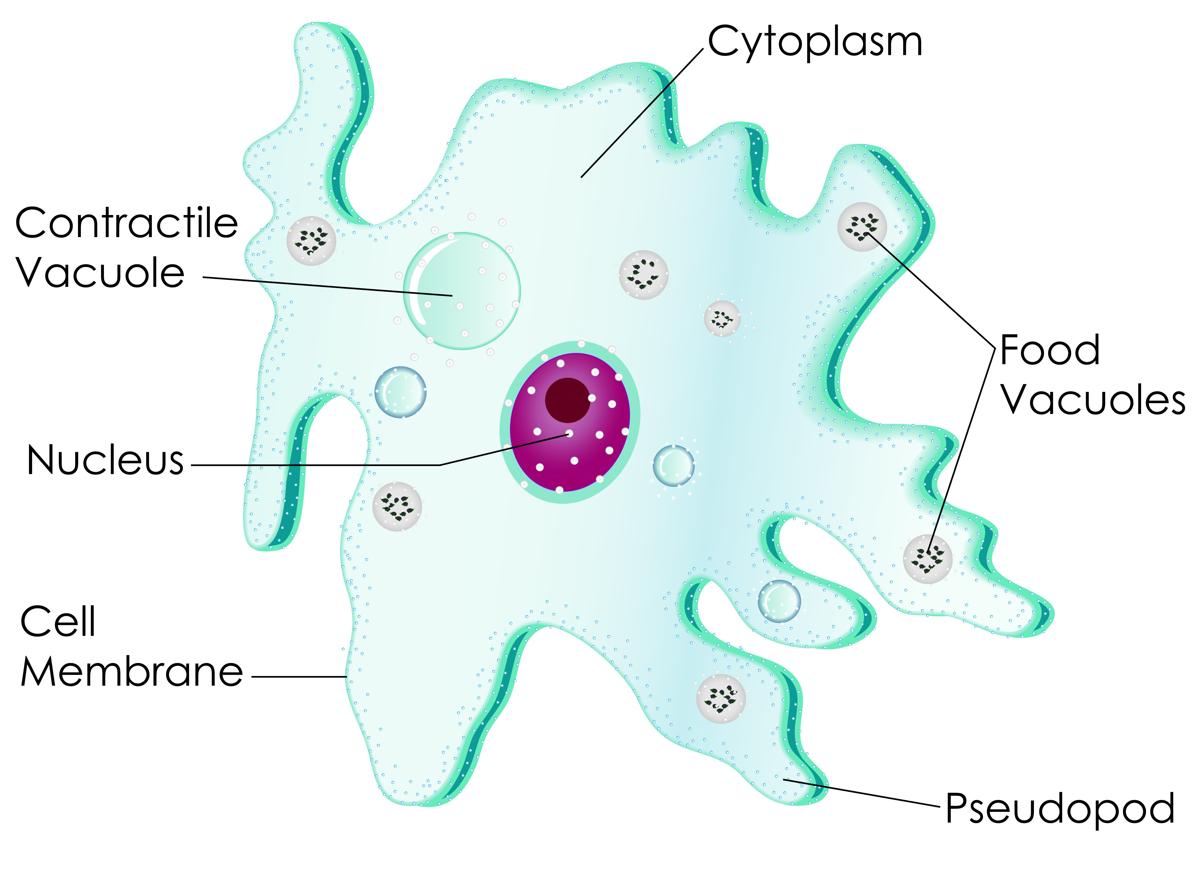Bacteria amoeba paramecium and yeast are examples of unicellular organisms. A unicellular or multicellular organism is made up of the fundamental unit of life the cell.

Unicellular Organisms Biology Wise
Protists do not share many similarities but.

. Almost every cell is surrounded by a cell wall and filled with a fluid-like substance known as cytoplasm or cytosol in which many different structures called organelles are present that each has. Cells can be Eukaryotic or Prokaryotic. Tissues in tur n for m organs.
Examples of prokaryotic cells. Unicellular organisms reproduce by the following ways. Classify bacteria on the basis of their shapes.
Unicellular algae or Amoeba reproduction is synonymous with growth ie increase in number of cells. Prokaryotic organisms and eukaryotic organisms. Hence we notice that in single-celled organisms we are not very.
In this a single cell divides giving rise to two daughter cells. Instead they are found in every major lineage of eukaryotic. Less commonly spelled ameba or amœba.
Plural amoebas or amoebae ə ˈ m iː b i often called an amoeboid is a type of cell or unicellular organism which has the ability to alter its shape primarily by extending and retracting pseudopods. A single-celled creature can carry out all of the functions that multicellular organisms can. Eukaryotes are highly organized unicellular or multicellular organisms such as animals and plants.
Compares and contrasts prokaryote cells and eukaryote cells before exploring organelle structures and functions. The difference between unicellular and multicellular organisms is quite apparent the number of cells. A single-celled organism like amoeba captures and digests food respires excretes grows and reproduces.
Small organisms that cannot be seen through the naked eyes and can only be seen under a microscope are called microorganisms or microbes. Amoebae do not form a single taxonomic group. The unicellular organisms reproduce by binary fission.
Cells can have an irregular shape such as an amoeba or a well-defined shape such as an RBC. The yeast cells reproduce by the process called budding. The prokaryotes and the single-celled eukaryotes can occur as a functional independent units of life.
Animals plants and fungi. Organisms fall into two general categories. Protista Fungi Animals and Plants.
In multicellular organisms reproduction refers to the production of. All cells whether unicellular or multicellular prokaryotic or eukaryotic simple or complex irrespective of size have the same basic composition. Similar functions in multicellular organisms are carried out by groups of specialised cells forming different tissues.
Unicellular or multicellular autotrophic organisms Contain chlorophyll pigment and carry out photosynthesis For example. To review this topic refer to Classifying and Exploring Life. Video includes the modern cell theory and p.
Sometimes amoeba reproduces by the process called encysting. Since the amoeba was discovered in the 1980s about 200 cases of the infection. Activity 81 The teacher may show a permanent.
Microscopes and Cells 1600s. It is a membrane-bound structure containing various cytoplasmic structures. Amoeba Proteus Plant Stem Red Blood Cell Nerve Cell Bacteria.
The cells in a tadpole become specialized into different cell types as the tadpole develops into a. In other words each and every living organism is composed of the cell. Eukaryotic cells are multicellular on the other hand prokaryotic cells are unicellular.
Examples of eukaryotic cells are. On the basis of their shapes bacteria are classified into four categories. An amoeba is a unicellular organism.
Protists are eukaryotes as they possess a nucleus and other membrane-bound organelles structures that perform a specific job. We have alr eady defined gr owth as equivalent to incr ease in cell number or mass. This can be seen in bacteria and amoeba.
Anton van Leeuwenhoek. As mentioned earlier the cell is the fundamental unit of all living things. The Kingdom Protista consists of eukaryotic protists.
A unicellular organism also known as a single-celled organism is an organism that consists of a single cell unlike a multicellular organism that consists of multiple cells. Chlamydomonas and Spirogyra v Viruses Viruses are also microscopic which reproduce only inside the cells of the host organism which may be a bacterium plant or animal. Unicellular-composed of 1 cell OR Multicellular- made of many cells.
Blooms Level 2 DOK 1-LOW REF. Humans animals plants birds and insects are examples of multicellular organisms. At one time simple organisms such as amoebas and single-celled.
The Shape of Cells. Unicellular organisms are organisms with only one cell. Grass mosquitos and worms are multicellular organisms.
Cells that may change their form include amoeba and WBC. All prokaryotes are unicellular and are classified into bacteria and archaeaMany eukaryotes are multicellular but. Members of this very diverse kingdom are typically unicelluar and less complex in structure than other eukaryotesIn a superficial sense these organisms are often described based on their similarities to the other groups of eukaryotes.
In eukaryotic cells more than one chromosome is present whereas in prokaryotic cells there is only one chromosome. An amoeba ə ˈ m iː b ə. That multicellular organisms per form.
Eg Amoeba Paramecium Volvox Spirogyra etc.
Unicellular And Multicellular Organisms Pass My Exams Easy Exam Revision Notes For Gsce Biology

Unicellular And Multi Cellular Organisms Definition Examples Diagrams

Human Versus Amoeba How Multicellular And Unicellular Organisms Carry Out Their Life Processes Ppt Video Online Download

Telikilaas Grade 8 Science Unicellular Organism Amoeba Youtube
0 Comments